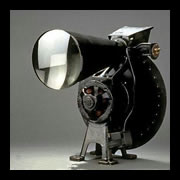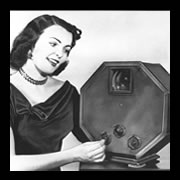
30 lines mechanical TV by Rene Barthelemy

1928 GE "Octagon" Mechanical TV 4"screen.
Mechanical television
It was first built and broadcast in 1927 by John Logie Baird. He used the concept of a camera and TV from Nipkow’s disk, which is the disk with holes in a spiral line. The number of holes is equal to the number of lines in the frame of a picture.
The rapidly rotating disk “slices” the image of the object on the horizontal or vertical axis. The phototube works as the receptor of the light. It produces a series of electrical signals, which vary depending on how strong the light is. After the image is transmitted, it is recreated by doing the same thing described above to transfer the image from the phototube to the screen.
Did you know?
Manufacturers churn out 11.4 million new TV sets, up from the 5.7 million receivers made in 1960.
